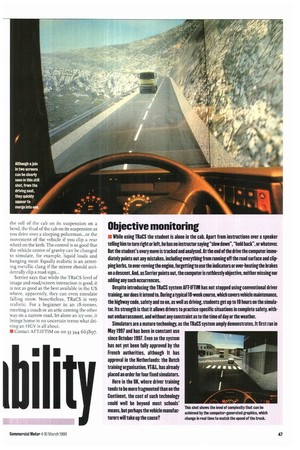Objective monitoring
Page 49

If you've noticed an error in this article please click here to report it so we can fix it.
• While using TRaCS the student is alone in the cab. Apart from instructions over a speaker telling him to turn right or lathe has no instructor saying "slow down", "hold back", or whatever. But the student's every move is tracked and analysed. At the end of the drive the computer immediately points out any mistakes, including everything from running off the road surface and clipping kerbs, to over-revving the engine, forgetting to use the indicators or over-heating the brakes on a descent. And, as Serrier points out, the computer is ruthlessly objective, neither missing nor adding any such occurrences.
Despite introducing the TRaCS system AFT-IFTIM has not stopped using conventional driver training, nor does it intend to. During a typical10-week course, which covers vehicle maintenance, the highway code, safety and soon, as well as driving, students get up to 10 hours on the simulator. Its strength is that it allows drivers to practice specific situations in complete safety, without embarrassment, and without any constraint as to the time of day or the weather.
Here in the UK, where driver training tends to be more fragmented than on the Continent, the cost of such technology could well be beyond most schools' means, but perhaps the vehicle manufacturers will take up the cause?








































































































